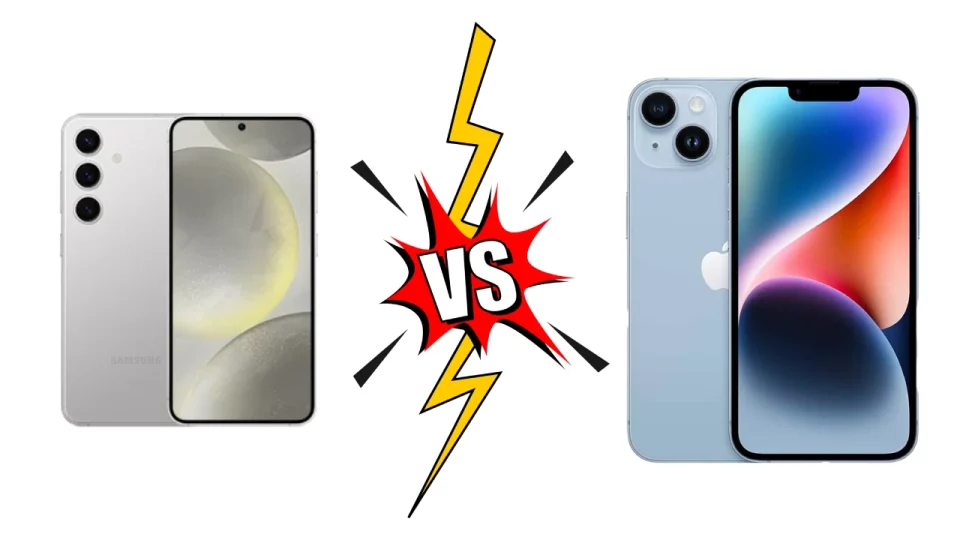Reports from major research firms such as Counterpoint, Canalys, and IDC highlight that the market experienced notable growth in 2024, marking a turnaround from the challenges of 2023.
While Chinese manufacturers like Xiaomi and Vivo have gained significant ground, Apple and Samsung remain the undisputed leaders in the global smartphone space. One of the key trends that emerged in 2024 is the shift in focus from foldable smartphones to AI-powered devices, as artificial intelligence has become the new hot selling point for manufacturers.
Table of Contents
The Global Recovery and Growth in 2024
The global smartphone industry witnessed a surge in sales in 2024, with a 4 percent growth reported by Counterpoint, while IDC and Canalys both reported increases of 6-7 percent in global shipments. This uptick follows a challenging 2023, which saw the lowest sales figures for the smartphone market in over a decade. The growth observed in 2024 is expected to continue into 2025, with analysts predicting a prolonged period of recovery and normalization.
Tarun Pathak, research director at Counterpoint, explained that 2024 was a year of recovery, following a difficult 2023. “The market started showing signs of recovery from Q4 2023 and has now grown for five consecutive quarters,” Pathak stated, highlighting the positive momentum in the industry.
Despite the overall recovery, there is still some debate over which company claims the top spot in terms of global smartphone market share. According to Counterpoint, Samsung led the market in 2024, while both IDC and Canalys reported that Apple took the crown. However, all three research firms agree that Xiaomi is rapidly closing the gap with the leaders, securing a solid third position.
The Race Between Apple, Samsung, and Xiaomi
Apple and Samsung have long been the dominant players in the global smartphone market, and 2024 was no exception. Both companies maintained their positions as market leaders, with Apple holding an 18 percent market share, according to Counterpoint’s estimates. Samsung, on the other hand, remained competitive, with IDC and Canalys both reporting that the company took the top spot in terms of global shipments for the year.
However, what stands out in 2024 is the rapid growth of Xiaomi, which has emerged as the fastest-growing major player in the market. Counterpoint reported a 12 percent increase in unit sales for Xiaomi, marking a notable achievement in the face of fierce competition from Apple and Samsung. With an estimated 14 percent market share, Xiaomi is steadily closing the gap with Apple, who maintains a lead of just 4 percentage points. The rise of Xiaomi is particularly impressive given the challenging global economic conditions that many manufacturers faced in 2023.
Xiaomi’s growth can be attributed to its aggressive pricing strategy and an expanded portfolio of devices, including a range of affordable smartphones that cater to the middle and lower segments of the market. The company has successfully capitalized on growing demand for budget-friendly smartphones, particularly in emerging markets such as India and Southeast Asia.
In addition to Xiaomi, other Chinese manufacturers, including Oppo (which includes OnePlus) and Vivo, have also seen notable growth in 2024. These companies have benefited from strong sales in Asia, particularly in China, India, and Southeast Asia. Furthermore, both Oppo and Vivo have experienced success in Europe, Africa, and Latin America, contributing to their overall market share gains.
The Transsion Group, which includes brands like Tecno and Infinix, is another significant player in the global smartphone market. These brands have carved out a niche for themselves in Africa and other emerging markets, where budget-friendly devices are in high demand.
Check also: Samsung’s Tri-Folding Smartphone: The Next Big Leap in Mobile Innovation
AI as the New Driving Force
As the global smartphone market recovered in 2024, one of the most notable trends was the increasing emphasis on artificial intelligence (AI) as a key selling point for smartphones. According to both Counterpoint and IDC, AI-powered smartphones have become the new focus for manufacturers, with many brands prioritizing AI advancements over other features, such as foldable screens.
AI has become an essential part of the smartphone experience, with manufacturers integrating generative AI and other advanced AI technologies into their devices. This shift is reflective of the growing consumer demand for smarter, more capable devices that can enhance productivity, entertainment, and daily tasks. Features like AI-powered cameras, voice assistants, and real-time language translation are becoming commonplace in many smartphones, and manufacturers are keen to continue innovating in this space.
Counterpoint predicts that by 2028, nine out of ten smartphones priced above $250 will feature generative AI, further emphasizing the growing importance of AI in the smartphone market. The integration of AI into smartphones is expected to revolutionize the way people interact with their devices, providing more personalized and efficient experiences.
You might like: Samsung and Apple Betting Big on Slim Smartphones in 2025 Here’s What to Expect
The Decline of Foldable Smartphones
While foldable smartphones had generated significant interest in previous years, 2024 marked a shift away from foldables as the central innovation in the smartphone market. According to IDC’s Anthony Scarsella, there has been a noticeable decline in demand for foldable devices, despite intensified marketing and promotions from manufacturers.
“The demand for foldables has decreased in the market, despite intensified promotions and marketing,” Scarsella explained.
“Manufacturers are now prioritizing new AI advancements at the expense of foldables.”
This shift suggests that while foldable smartphones still have a place in the market, they are no longer the key selling point they once were. Instead, AI capabilities have taken center stage, with manufacturers focusing on delivering smarter, more versatile devices that cater to the evolving needs of consumers.
The decline in demand for foldable smartphones can also be attributed to a combination of factors, including their relatively high price points and concerns about the durability of foldable screens. While foldable devices offer unique form factors and features, they have not yet reached the level of mainstream adoption that many industry analysts had anticipated.
